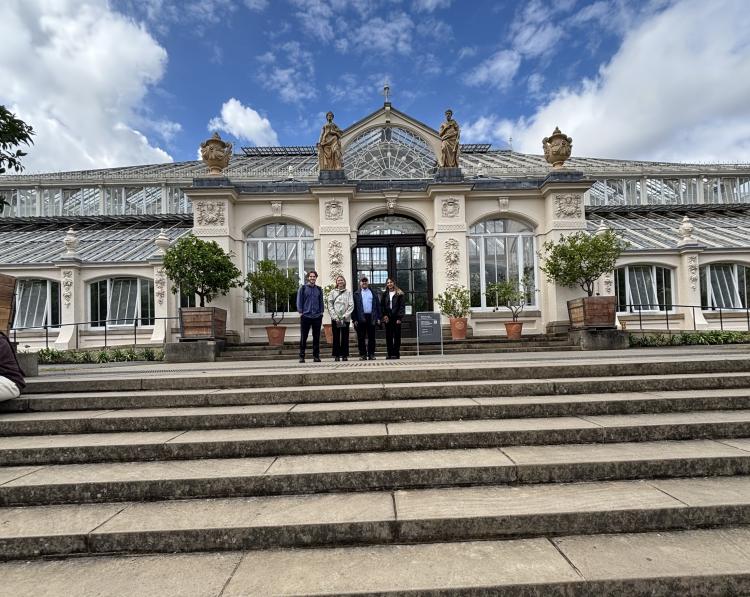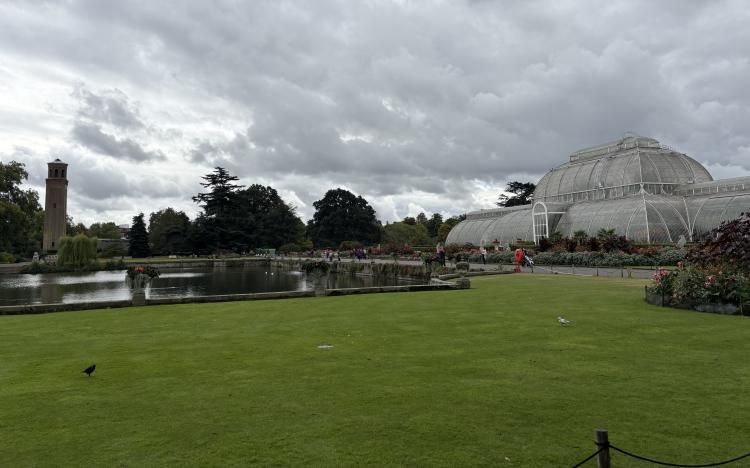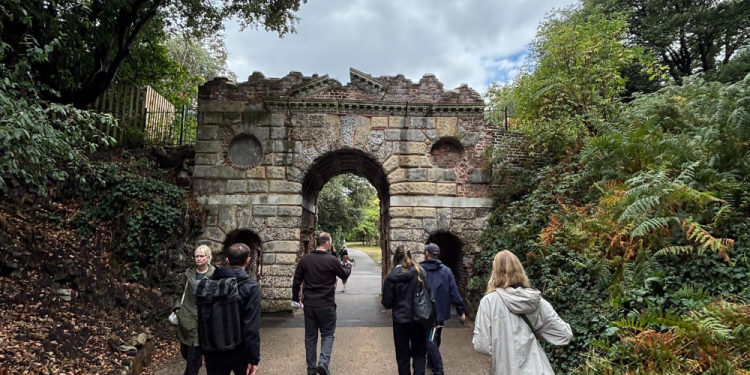How Kew Gardens blends history with a sustainable tomorrow
Salix and the Public Sector Decarbonisation Scheme are helping one of the world’s most iconic gardens go green
Every year, millions of visitors pass through the ornate gates of the Royal Botanic Gardens, Kew, to marvel at its breathtaking landscapes and plant collections.
However, beyond the beauty lies a deeper mission.
Kew is a hub of global science and research, home to 1,200 staff including scientists, botanists, and researchers, all dedicated to protecting biodiversity and tackling the challenges of climate change.
Today, with support from our teams at Salix and the Public Sector Decarbonisation Scheme, Kew is working to dramatically cut its carbon footprint and meet its ambitious goal of becoming Climate Positive by 2030.

Senior project manager at Kew, Carl Dodd, explains how decarbonisation works have progressed at the famous gardens
Photo credit: Salix Finance
It’s a huge privilege to work with Kew, which is all about protecting our planet and its incredible diversity of species.
A partnership for change
Thanks to support from the Public Sector Decarbonisation, Kew has already made significant strides.
At Salix we have worked with Kew over a number of years to deliver funding run by the Department for Energy Security and Net Zero and delivered by our teams.
More recently, old oil boilers have been replaced with heat pumps, energy efficiency has been improved at the Wakehurst estate, and fabric upgrades have been introduced across historic buildings during Phase 3b of the Public Sector Decarbonisation Scheme.
Kew was also awarded funding under the more recent Phase 3c and Phase 4 of the Public Sector Decarbonisation Scheme. This has paid for energy efficiency work at the famous Temperate House which is home to more than 10,000 species of plants.
Kew also received funding from Phase 5 Low Carbon Skills Fund scheme, also delivered by our teams Salix. The fund, now closed, was used to help prepare for their Phase 4 Public Sector Decarbonisation Scheme project at the Lower Nursery.
The teams say this meant they have ‘hit the ground running’.
Programme Coordinator at Salix, Owain Davies, has worked closely with Kew throughout the process. He visited Kew with colleagues Bea Morrisson, Anjali Ghedia and Davide Natuzzi to talk about some of the challenges first hand.
Owain said: “It’s a huge privilege to work with Kew, which is all about protecting our planet and its incredible diversity of species.
“These projects are complex and it’s far more than simply switching on new technologies. Every step must consider historic buildings, access, and the environment itself. Kew has it all, the complex challenges, but the incredible potential to make a difference.”

Pictured from left, the Salix team, Owain Davies, Bea Morrison, Davide Natuzzi and Anjali Ghedia outside the Temperate House at Kew
Photo credit: Salix Finance
Innovation inside the glasshouses
Kew’s projects highlight the delicate balance between conservation and innovation.
At the Temperate House, the world’s largest Victorian glasshouse, Public Sector Decarbonisation Scheme funding is supporting energy-saving measures that must be carefully adapted to the historic structure.
Meanwhile, the Lower Nursery, where rare and tropical plants are grown, is seeing the introduction of air source heat pumps. Here, every adjustment is critical: the glasshouses must remain precisely regulated to replicate the unique climates of the plants inside.
Senior project manager at Kew Matthew Vella said: “This Phase 4 project is unlike anything we’ve done before. Glasshouses were never designed to be airtight, which makes energy efficiency a huge challenge.
“We’re making improvements to the fabric where possible but protecting the plants always comes first.”
Fellow senior project manager Carl Dodd added: “The Temperate House decarbonisation (Phase 3c) represents a step change in our decarbonisation plan and takes us further in our journey to becoming climate positive by 2030.
“The project represents so much more than just a change of equipment to reduce our carbon footprint - it is a new way of becoming resilient and protecting the valuable temperate living collection for the future.”

The Palm House at Kew specialises in growing palms and sub-tropical and tropical plants - many are extinct
Photo credit: Salix Finance
Challenges of a World Heritage site
Delivering decarbonisation at Kew isn’t straightforward. Among the challenges are:
- Limited access: Narrow, historic paths make transporting large equipment difficult.
- Protected landscapes: Cable routes must avoid ancient trees, with strict biodiversity net gain rules requiring significant replanting if a tree is removed.
- Historic land ownership: Kew’s land has had many owners, a legacy of its almost 300-year history, which adds complexity to permissions and planning.
And while these projects move forward, Kew must also remain open to the public. In 2023-24, the gardens generated £66 million in self-funded income through admissions, memberships, retail, and events.
Protecting this revenue is essential for research and conservation to continue. It means careful planning to ensure works don’t disrupt visitor experience.

Our Salix team are guided through the ruined arch, Kew Gardens, which was initially designed to look like a Roman ruin
Photo credit: Salix Finance
Building a blueprint for the future
Despite the hurdles, the work at Kew is already setting a precedent for how heritage sites around the world can reduce emissions without compromising history or biodiversity.
Owain added: “We have so much to learn from this work.
“The challenges are unique, but the lessons will help shape projects everywhere. This is about innovation, balance, and protecting the future of our planet.”
As Kew continues its journey, its vision is clear: to cherish its heritage, inspire visitors, and lead the way towards a climate-positive future.
At Salix, we’re proud to be on this journey with the team at Kew.
Thank you to the team for hosting our colleagues at Salix, learning more about the projects we’re delivering.




